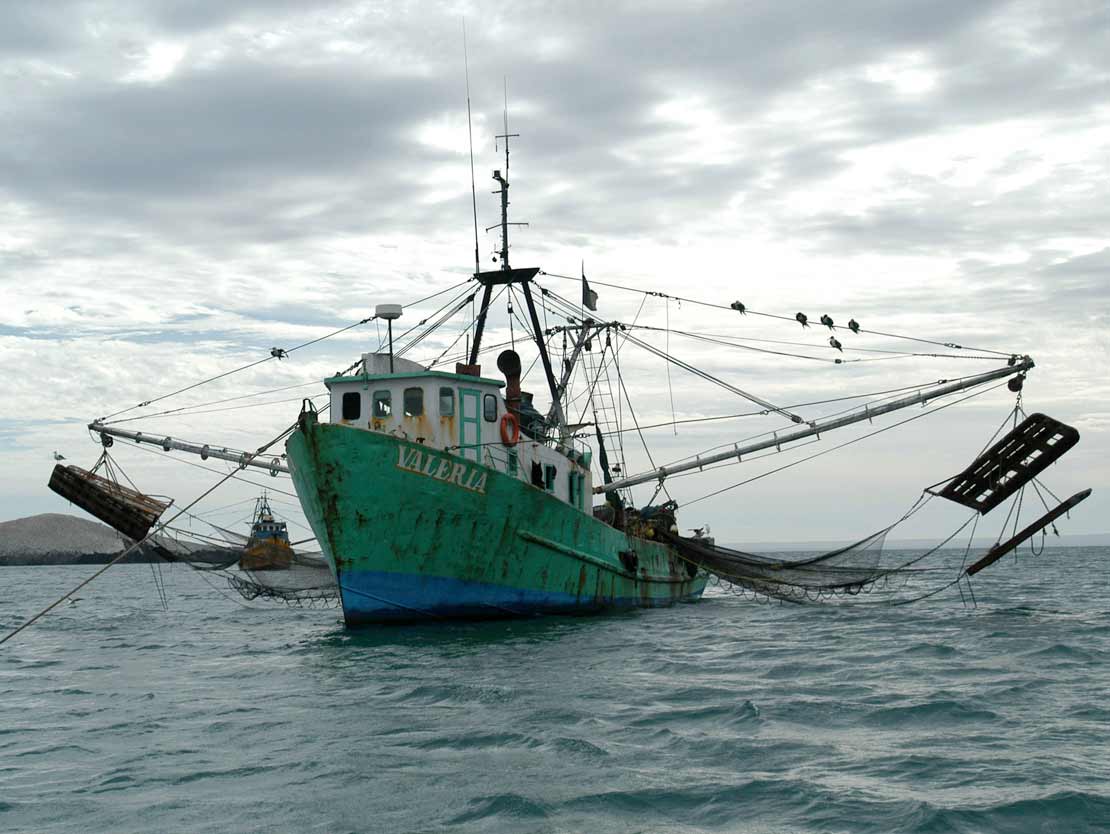Natural resource management and seafood markets
Seafood is the most highly traded food commodity in the world, providing income and sustenance for billions of people across the globe. Trade in fish and fish products reached US$143 billion in 2016 and is expected to have reached a new peak at approximately US$152 billion in 2017. Each year, the ocean provides a minimum contribution of $2.5 trillion to the global economy. Putting it into an international context, these conservative estimates would make the ocean the world’s 7th largest economy.
The ability of the seafood industry to operate in perpetuity depends upon the sustainability of this already over-taxed resource. As global population and consumption patterns climb, there will be increasing pressure on seafood production in the future as stocks are unable to sustainably yield more year after year. This pressure not only threatens the marine environment, but negatively impacts seafood supply chains and, ultimately, the bottom lines of companies sourcing seafood. Companies that do not respect the natural limits of the environment in which they operate risk financial instability and long-term failure. A lack of sustainable management across the seafood sector leads to increasingly erratic supply volatility and companies must attempt to alleviate the resulting operational and financial risks, from product shortages to pricing fluctuations and erosion of profit margins.
The good news is that what’s good for the environment is also good for business: stable, healthy fisheries and aquaculture operations mean stable supply and pricing. Although there are many threats to business that arise from unsustainable practices, there are also many tools that companies can utilize to mitigate those risks. Sustainability is essential to business longevity and stems from the intrinsic need to responsibly manage our resources so that we may be lucky enough to benefit from and share them for years to come.

© Gustavo Ybarra / WWF
A case study for natural resource management
It is a simple – and one would think obvious – truth: businesses that profit from our natural resources should be the first in line to protect them. In the seafood industry, for example, for companies to remain profitable in the long-term, they are dependent on the sustainability of the fisheries that they source product from. The case can therefore be made that companies that do not invest in the protection and sustainable management of their natural resources face risks to their profitability.
One example of this potential risk factor can be seen through the steep decline across Southeast Asia of the blue swimming crab (BSC) fishery and the resulting negative impacts on US buyers.
Over the past decade, the US market has experienced volatility in import quantities and prices of BSC from Southeast Asia. Import volume decreased by 6 million lbs. (or 13%) from 2007-2017, while prices increased by 38%. At the same time, the spread in price between meat from large, mature crab and smaller crab has widened by 23% in ten years, with the Claw-Jumbo spread jumping from $14.25/lb in 2007 to $17.59/lb in 2017. This is consistent with a squeeze on mature crab supply, a sign of over-fishing and poor management, as individuals are caught before they reach full size.
According to interviews with US importers of Southeast Asian BSC, weak management of crab fisheries in the region is one of the key drivers of volatility in crab production costs.
When the BSC stock declines, the crab become scarcer and fishers must put more effort into landing crab. This decrease in catch per unit effort leads to increased prices for first buyers, which then propagate along the supply chain. An analysis of historical effects of BSC stock volatility demonstrated that crab importers’ margins and market shares are highly sensitive to these changes. After evaluating the potential impacts of import price increases, it was found that most small and medium-sized firms would lose most of their margin and market share. Meanwhile, large undiversified firms stood to lose 32%-47% of their margins and 21%-38% of their market share.
While some large end-market buyers are currently able to cushion these blows to profitability with short-term buying strategies, such as diversifying their sourcing portfolio and engaging in shorter contracts, these efforts will eventually falter and fail if investments in the stabilization and recovery of the fishery are not made. The analysis of the supply volatility of Southeast Asian BSC shows how over-exploitation of natural resources, which generates cost increases for fishers, is passed up the supply chain with severe adverse effects on the profitability of companies that rely on this resource. Better management of the supply fisheries is urgently required to smooth out fluctuations in supply and minimize cost volatility. Given the material impacts to businesses who rely on continual supply of product to maintain profitability and a competitive position in the market, there is a clear rationale for collective engagement and investment in the better management of fisheries.
To learn more, please refer to the following reports on the Southeast Asian Blue Swimming Crab. Developed in parallel, The Case for Pre-Competitive Collaboration (produced by Wilderness Markets) explores the history and development of the NFI Crab Council while the study of the Impact of Fishery Management on Buyer Profitability (produced by Vivid Economics) explores how fishery mismanagement and volatility at the base of the supply chain has negative impacts to business profitability.


